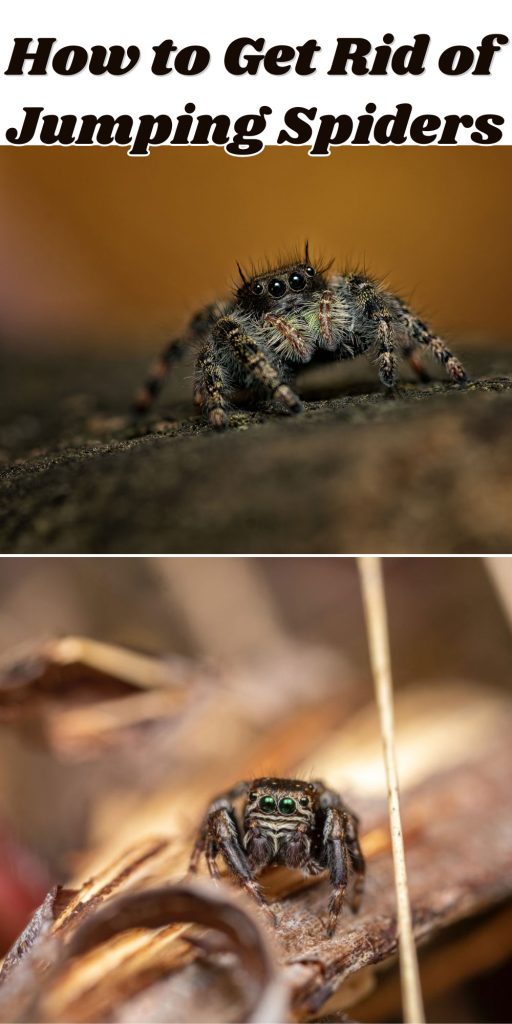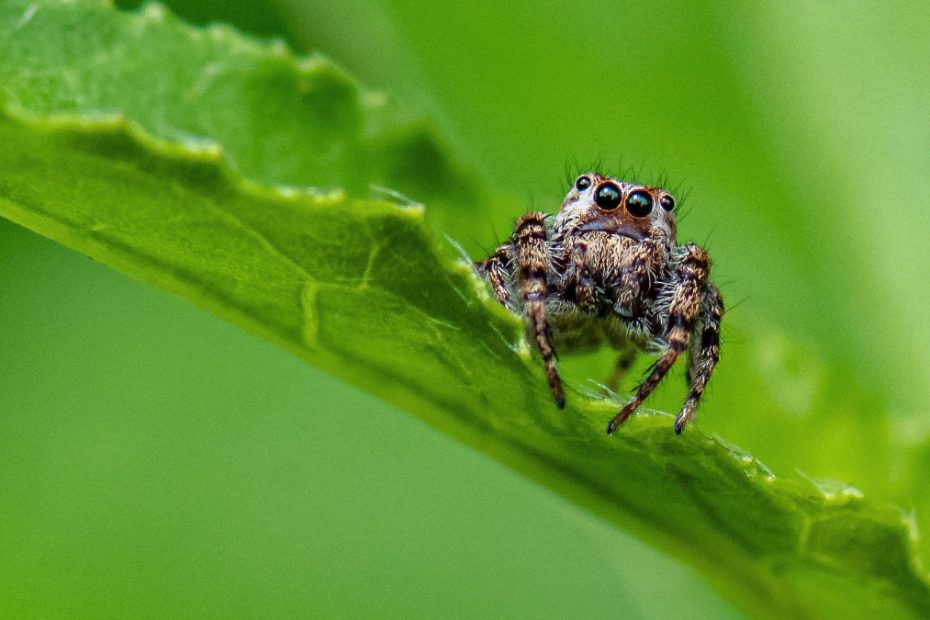Jumping spiders might be fascinating to watch from a distance, but having them invade your home is a different story. These agile, tiny hunters can be a nuisance, especially if you have a fear of spiders. Fortunately, there are effective ways to keep them at bay.
Understanding what attracts jumping spiders to your living space is crucial. They often seek out warmth, food, and shelter. By making a few simple changes to your environment, you can significantly reduce their presence and reclaim your home from these unwelcome guests. Let’s jump into some practical steps to get rid of jumping spiders for good.
Key Takeaways
- Identify and Understand Jumping Spiders: Recognizing the unique characteristics and behaviors of jumping spiders is essential for effective management.
- Preventive Measures: Seal entry points and reduce clutter to make your home less hospitable to jumping spiders.
- Natural Repellents: Use essential oils like peppermint, lavender, and eucalyptus, or a vinegar and water solution, to repel jumping spiders without harsh chemicals.
- Chemical Solutions: Apply insecticides and consider professional pest control services for severe infestations to ensure comprehensive elimination.
- Physical Removal: Employ vacuuming and traps for the immediate and effective physical removal of jumping spiders from your home.

Understanding Jumping Spiders
Jumping spiders are a common household nuisance, known for their agility and distinct physical features. Learning about these spiders assists in identifying and managing them effectively.
Identifying Jumping Spiders
Jumping spiders possess unique characteristics that set them apart from other spiders. Key features include:
- Size: Usually 1/8 to 3/4 inches long.
- Color: Often black, brown, or gray with bright markings.
- Eyes: Four pairs, with the front middle pair being large and forward-facing, providing excellent vision.
- Body Shape: Compact with a robust, hairy body and short legs.
Examples: The Bold Jumping Spider (Phidippus audax) is black with white or orange spots, while the Daring Jumping Spider (Phidippus clarus) is known for its iridescent chelicerae.
Behavior and Habitat
Jumping spiders exhibit distinctive behaviors and have specific habitats:
- Movement: Known for their jumping ability, they pounce on prey rather than weaving webs for hunting.
- Diet: Primarily consists of small insects and other spiders.
- Habitat: Commonly found in gardens, homes, and other structures providing warmth, food, and shelter.
- Daytime Activity: Most active during the day, using their superior vision to stalk and leap onto prey.
Examples: Indoors, they prefer areas with minimal disturbances such as basements, attics, and around windows. Outdoors, they’re often found on walls, tree bark, and plants.
Understanding these aspects helps in implementing effective control measures and creating an environment less conducive to jumping spiders.
Preventive Measures
Effective preventive measures can keep your home free of jumping spiders. Implementing these strategies helps deter these pests from entering and settling in your living space.
Sealing Entry Points
To prevent jumping spiders from getting inside, identify and seal common entry points. Key areas to check include:
- Doors and Windows: Ensure that doors and windows close tightly. Install weather stripping to seal gaps and fix any damaged screens.
- Cracks and Crevices: Inspect the exterior of your home for cracks and crevices. Use caulk or sealant to fill these openings.
- Vents and Utility Openings: Cover vents with mesh screens and seal gaps around utility lines entering your home.
Routine inspections help maintain these barriers, making it less likely for spiders to find their way inside.
Decluttering Your Home
Decluttering reduces the places where jumping spiders can hide. Focus on these areas:
- Basements and Attics: Store items in sealed plastic bins rather than cardboard boxes, which spiders can easily access.
- Closets and Shelves: Keep these spaces organized. Avoid overloading shelves, and regularly clean and vacuum.
- Outdoor Areas: Clear away piles of wood, leaves, and other debris. Keep your lawn mowed and trim vegetation close to your home’s foundation.
Maintaining a clean and organized environment disrupts potential habitats, making your home less attractive to jumping spiders.
By taking these preventive measures, you create a less hospitable environment for jumping spiders. Regular maintenance and vigilance are essential to keep these pests at bay.
Natural Repellents
Jumping spiders can be deterred using various natural repellents that are safe and effective. By incorporating these into your home, you can create an environment that’s unfavorable to these pests.
Essential Oils
Essential oils are powerful repellents against jumping spiders:
- Peppermint Oil: Mix 10 drops of peppermint oil with water in a spray bottle. Spray it around windows, doors, and corners.
- Lavender Oil: Use lavender oil to repel spiders by placing cotton balls with a few drops in areas where spiders are seen.
- Eucalyptus Oil: Combine eucalyptus oil with water and spray it in attics, basements, and other spider-prone areas.
These oils work because spiders dislike their strong scents. Reapply every week for consistent results.
Vinegar and Water Solution
A vinegar and water solution is an effective, cost-efficient repellent:
- Ingredients: Mix equal parts white vinegar and water in a spray bottle.
- Application: Spray the mixture around entry points like doors, windows, and cracks.
- Frequency: Reapply every few days for best results.
Vinegar’s acetic acid disrupts spiders’ sensory organs, making your home less hospitable to them.
Using these natural repellents, you can effectively manage the jumping spider population in your home without resorting to harsh chemicals.
Chemical Solutions
Chemical solutions offer a powerful method for tackling jumping spider infestations. These solutions include commercially available insecticides and professional pest control services, each of which can be employed to ensure an effective and thorough approach.
Insecticides
Insecticides, specifically formulated to target spiders, can efficiently reduce jumping spider populations. These chemicals come in various forms—sprays, powders, and foggers—that cater to different infestation levels and application preferences.
- Sprays: Apply directly to infested areas, such as cracks, crevices, and behind furniture. Opt for products containing pyrethroids, which are highly effective against spiders.
- Powders: Disperse in hard-to-reach areas like basements and attics. Diatomaceous earth, often used as a powder, targets spiders by dehydrating them.
- Foggers: Use for severe infestations. These provide comprehensive coverage by releasing a fine mist that penetrates deeply into all areas of a room.
It’s crucial to follow the manufacturer’s instructions for safe usage. Keep children and pets away during application to avoid accidental exposure. Routine applications may be necessary for sustained control.
Professional Pest Control
Professional pest control provides a more comprehensive solution. Experts conduct a detailed inspection, identifying all infested areas and common entry points.
- Assessment and Identification: Pest control experts will assess the extent of the infestation and identify the specific spider species.
- Custom Treatment Plans: Based on the assessment, experts create a custom treatment plan. This may involve a combination of chemical treatments and preventive measures.
- Ongoing Maintenance: Regular visits ensure the problem doesn’t recur. Technicians will reapply treatments and check for new infestations.
Rest assured that professionals use EPA-approved chemicals, guaranteeing safety for your household. Professional services save you time and bring peace of mind by providing lasting results.
By incorporating these chemical solutions, you can effectively manage and eliminate jumping spider infestations, ensuring a safer, spider-free home.
Physical Removal
Physical removal is a straightforward and immediate way to manage jumping spiders in your home. This method involves direct actions to eliminate these pests, ensuring a safer and more comfortable living environment.
Vacuuming
Vacuuming is an effective and immediate way to remove jumping spiders. By using a vacuum cleaner with a hose attachment, you can easily reach spiders and their webs in various corners of your home. Follow these steps to maximize efficiency:
- Identify Spider Locations: Check around windows, ceilings, corners, and other common hiding spots.
- Use Hose Attachment: Equip your vacuum cleaner with a hose for better reach and flexibility.
- Vacuum Slowly: Move the hose slowly over surfaces to ensure complete suction of spiders and webs.
- Dispose of Contents Safely: After vacuuming, immediately empty the vacuum contents into a sealed plastic bag and discard it outside.
Traps
Setting traps is another practical method for capturing and removing jumping spiders. Traps can help control and monitor spider populations within your home. Consider these types of traps:
- Sticky Traps: Place sticky traps near entry points and areas where spiders are frequently seen. These traps immobilize spiders upon contact.
- Commercial Spider Traps: Opt for commercial traps designed specifically for spiders, which often contain attractants to lure them.
- DIY Traps: Create homemade traps using materials like sticky tape and small containers. Position them in strategic locations for better results.
- Placement Strategy: Position traps in dark, secluded places to increase capture rates. Check traps regularly and replace as needed.
By incorporating both vacuuming and traps, you can effectively reduce the jumping spider population in your home. Consistent application of these methods will aid in maintaining a spiders-free environment.
Conclusion
By understanding what attracts jumping spiders and implementing the suggested preventive measures, you can effectively reduce their presence in your home. Simple changes like sealing entry points, decluttering, and using natural repellents can make a significant difference. While chemical solutions and professional pest control services offer powerful options, physical removal methods like vacuuming and trapping also play a crucial role. With these strategies, you can create a less inviting environment for jumping spiders and enjoy a spider-free home. Stay vigilant and proactive to keep these unwelcome guests at bay.
Frequently Asked Questions
What attracts jumping spiders to homes?
Jumping spiders are attracted to homes due to their need for warmth, food, and shelter. They often seek places like basements and attics that provide these essentials with minimal disturbance.
How can I identify a jumping spider?
Jumping spiders are typically 1/8 to 3/4 inches in size and can be black, brown, or gray with bright markings. They have distinctive eye arrangements that give them excellent vision and are known for their jumping ability used for hunting.
What are some natural repellents for jumping spiders?
Essential oils like peppermint, lavender, and eucalyptus can be mixed with water and sprayed around the home to deter spiders. A vinegar and water solution is also effective when sprayed around common entry points.
Are chemical insecticides effective against jumping spiders?
Yes, various insecticides specifically formulated to target spiders, such as sprays, powders, and foggers, are effective. It’s important to follow safety instructions during application and consider routine treatments for sustained control.
How can I physically remove jumping spiders from my home?
Vacuuming is an effective method for immediate removal. Identifying spider locations and safely disposing of vacuum contents are key. Using sticky traps and DIY options can also help capture and monitor spider populations.
Why should I consider professional pest control services?
Professional pest control services offer comprehensive solutions through detailed inspections, custom treatment plans, and ongoing maintenance. They ensure the use of EPA-approved chemicals, providing effective and safe management of jumping spider infestations.
How can I prevent jumping spiders from entering my home?
Seal common entry points like doors, windows, cracks, and vents. Regularly inspect and maintain these barriers. Decluttering and storing items in sealed containers can reduce potential hiding spots and make the home less attractive to spiders.
